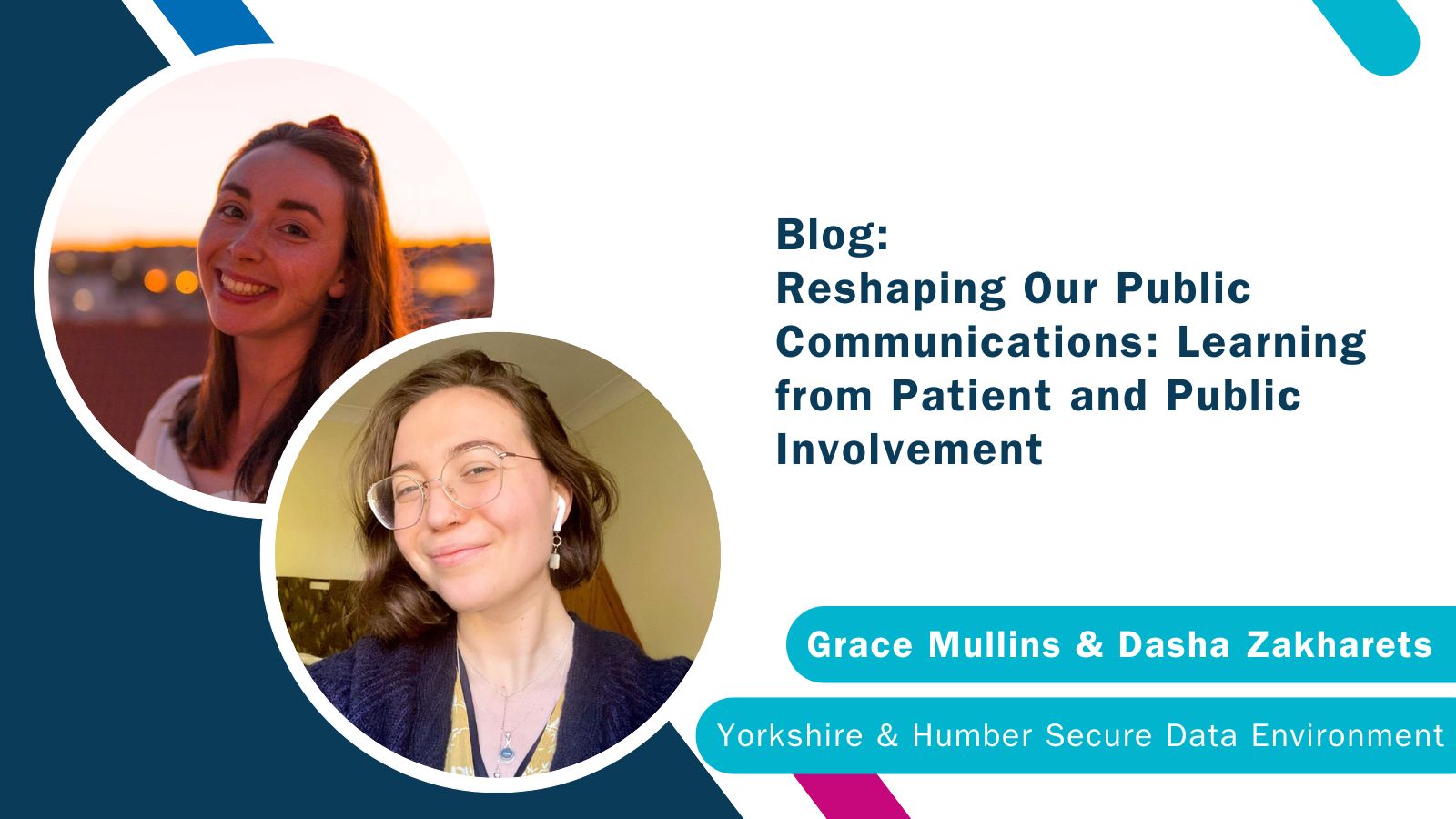When the Yorkshire and Humber Secure Data Environment (Y&H SDE) PPIE and Communications team first began our public engagement activities, we focused on explaining the programme’s purpose, addressing key data security concerns, and showcasing potential SDE impact through case studies. These priorities were established based on the widely acknowledged importance of public trust in data-driven research and healthcare, and also the number of studies on public attitudes toward research, including Public Perceptions of Research , Data-driven research and healthcare: public trust, data governance and the NHS, Public attitudes to data in the NHS and social care, and HRA User Satisfaction Report.
Our communications materials explained what a secure data environment for research is, outlined data security measures, and highlighted our SDE’s features and benefits for members of the public to build trust and transparency around data use in research. Our communications centred on answering questions such as:
- What is a secure data environment and why is it important for researchers?
- How do researchers access and analyse datasets within it?
- What anonymisation techniques are used?
- What technical safeguards are in place?
While these are important questions that we continue to address, when we first started, we realised they were not the primary questions most members of the public were asking when they heard about the Y&H SDE.
Communities changing our focus
Our Public and Patient Involvement and Engagement (PPIE) workshops reshaped our public communication. The conversations were led by voluntary organisations and the workshops were designed to suit each specific public audience group.
The conversations have helped shape communications and engagement surveys by discussing concerns and confusion around health and care data being used for research. They used their own examples on how best to describe the SDE in a more public friendly and accessible way, that we have adopted for future PPIE and Communications work.
The most profound insights emerged around participants’ fragmented understanding of healthcare research and the role of NHS patients data. Many struggled to comprehend how their health and care data can be used in research and how that then improves the health of the population. They were uncertain about how various NHS organisations collect, store, and utilise patient information. Most importantly, many participants lacked clear, tangible examples of how such research directly impacts individuals’ lives and improves overall living standards.

Participants did not reject data sharing; they simply wanted transparent, meaningful explanations that would connect abstract or complex research processes to concrete personal experiences. They wanted to understand how their = medical information could potentially lead to breakthrough treatments, improved healthcare services, and/or enhance their own or their local community’s health outcomes.
After collecting and analysing these insights, we moved to rich, narrative-driven dialogue that centres on human experiences and choices. Our communications and involvement approach started to focus on helping our communities understand the journey of their data: how a single, anonymised data point could contribute to discovering a new treatment, improving local health services, and potentially saving lives.
We started to answer questions such as:
- What do we mean by your healthcare data?
- What is primary and secondary care data in the NHS?
- Who can access your information for secondary usage?
- What are the tangible benefits of research to communities?
We keep building the library of relevant research case studies across the region and put them into powerful stories at the core of which lies data. Switching from talking in the abstract to adopting a more personal approach, we invited the public to help shape the programme together.

Therefore, perhaps our most significant transformation was embracing co-production, collaborating directly with community representatives, PPIE members, and diverse community groups to help shape and develop our communication assets. This approach means our materials are not just reviewed but actively co-created by the communities they serve. For instance, Yorkshire and Humber citizens gave our team practical recommendations that have directly influenced our communication delivery plan. Participants suggested the next channels for information dissemination, including:
– Official NHS letters, NHS app
– Posters in medical facilities
– Social media campaigns
– Community information sessions
To our Yorkshire and Humber communities: Thank you for guiding us, challenging us, and helping us create a trustworthy and respectful approach to health and care data research.
*Yorkshire and Humber Secure Data Environment is a secure NHS data storage and access system. It brings together healthcare data in one place and allows researchers and innovators to use it safely for their work. The SDE provides a chance to completely transform the Yorkshire and Humber region by creating infrastructure for storing data and allowing secure access to it, while maintaining the highest standards of NHS data confidentiality.
